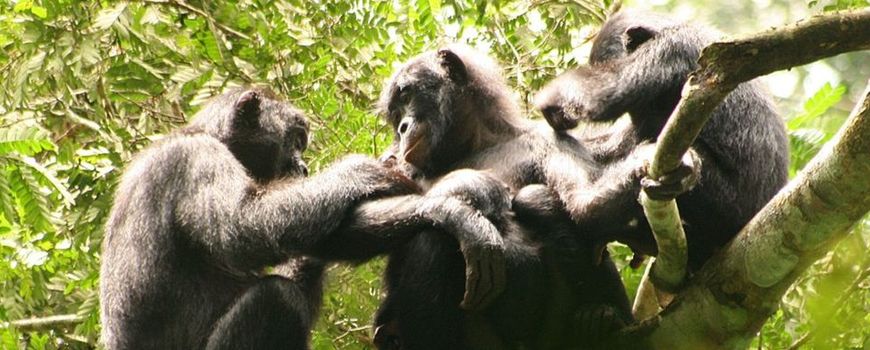In the distant, distant past, there lived a species of great ape that would become the ancestor of three species of ape that still exist today: the bonobo, the chimpanzee and man. Scientists like to study the behavior and other characteristics of bonobos and chimpanzees, in order to gain more insight into us as humans and our evolution.
That is also what drove Evy van Berlo when she decided for her PhD research to look at the evolutionary basis of emotions in humans and closely related great apes. Van Berlo is now working as a postdoctoral researcher at the University of Amsterdam, but conducted her PhD research at Leiden University. For one of her studies, conducted together with lead researcher Mariska Kret of Leiden University and the animal caretakers of the Apenheul, she looked at how bonobos and humans react to images of conspecifics with different types of expressions. The results of that study have now been published in the journal Emotion van de American Psychological Association.
Dot on a screen
Van Berlo trained bonobos in the Apenheul to press a dot on a screen. After touching the dot, two images appeared very briefly. The images presented showed bonobos from the same group as well as unknown congeners. Some were neutral, while others showed an expression or activity that clearly had an emotion associated with it, such as fear, play, or sex.
A dot appeared behind one of these two images, which the monkeys had to touch as quickly as possible. Touching the dot was eventually followed by a reward in the form of a piece of apple. The system kept track of how quickly the bonobos, once they had figured out the trick, pressed the dot that appeared after seeing the different photos. The idea behind this study was that monkeys are faster at touching the dot that appears behind the photo that immediately grabs attention.
“Do you react faster than a bonobo?”
Van Berlo and her colleagues also conducted a variant of this study with human visitors to the Apenheul. The people were presented with the same screen and dot, with photos of strangers or a person with whom they visited the zoo that day. There were varying facial expressions in the photos: neutral, happy, scared, angry, and so on. The challenge for the human visitors was, “Do you react faster than a bonobo?” Reaction time was also examined here, with a shorter reaction time being interpreted as drawing attention to the photo shown at that moment.
“We saw in these studies that both humans and bonobos respond more quickly to photos of conspecifics with an emotional charge than to neutral photos,” says Van Berlo. “That’s also what we expected: it fits with the fact that we are both social animals. Yet there was also a remarkable difference. We humans are mainly focused on emotionally charged photos of people we know, while the attention of bonobos is precisely to studying emotionally charged photographs of bonobos unknown to them.”
Evolutionary difference
This finding fits with previous studies that show that bonobos are a so-called xenophile species: they are more attracted to unknown than to known conspecifics. For example, unlike us humans, they will share food more quickly with bonobos that are foreign to them than with familiar congeners.
Van Berlo: “We suspected that this is an evolutionary difference that has arisen due to differences in living environment. Bonobos live in a relatively stable ecological environment in Congo, where enough food is available. Under those circumstances, peaceful interaction with strangers is probably beneficial for the conservation of the species. Early humans, on the other hand, lived in itinerant groups that had to compete with each other for food. Under such circumstances, it is probably evolutionarily more beneficial to favor individuals from your own group over strangers.”
Chimpanzees
According to Van Berlo, it would be interesting to repeat this study with other great apes. Bonobos are known as the most peaceful ape. Bonobos are very similar in appearance to chimpanzees – they were formerly known as pygmy chimpanzees – but their social organization and behavior are very different. For example, chimpanzees are a lot more competitive, and chimpanzees are males who are at the head of a group, while females are dominant and in charge of bonobos.
Van Berlo: “It would be nice to test that idea of the importance of the living environment for the evolutionary development of the attitude towards strangers with other great apes through a study like this. With chimpanzees, for example, I would expect that they would be more interested in emotions of people they know than emotions of strangers.”
More information
Text: IBED
Foto: DBeaune, Wikimedia Commons (lead photo: bonobos at a research site in Congo); Hugh Jansman, Apenheul

